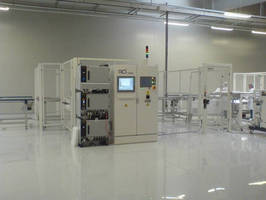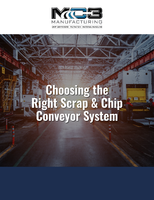Glass-Film and Glass-Glass Solar Modules in Various Dimensions, Formats and Colors
Share:

Austrian photovoltaics manufacturer relies on partially-automated, highly-flexible production line made by ACI-ecotec Glass-film and glass-glass solar modules in various dimensions, formats and colors
To move away from purely standard module production towards manufacturing order-related crystalline high-performance photovoltaic modules to account for individual demands for varying dimensions, shapes and colors, not only using conventional glass-film but also glass-glass technology. That was the aim the Austrian company PV Products GmbH set itself. This goal could only be achieved by implementing an extremely flexible, partially-automated manufacturing system. The customized production line is designed and realized by ACI-ecotec in Zimmern in Southern Germany.
Based in the Styrian town of Wies in Austria, PV Products GmbH (PVP) produces your glass-film and glass-glass high-efficiency modules from 156 x 156 mm mono- and polycrystalline silicon cells in three product series with 48, 60 or 72 cells. You can choose between normal glass, laminated safety glass (LSG) and LSG-insulating glass. The company which founded in 2009 also supplies solar modules in special dimensions and formats, for example round or triangular modules, as well as in a broad range of colors. To be able to do this, PVP needed a partially-automated, highly-flexible production line, tailor-made exactly to its requirements and rapidly convertible to enable different-sized modules to be produced. With ACI-ecotec GmbH, the Austrian company found a partner which was not only able to supply a customized solution with its S30M plant concept, but which also provided a competent consulting service.
Line and customized production combined
In order to be able to manufacture photovoltaic modules in individual formats with a high degree of automation, the production system S30M is designed to enable both line and customized production. Therefore, all glass panels are washed and dried automatically before the first encapsulation film is applied. Special formats are then diverted to flexible manufacturing units while standard glass panels continue on to the lay-up station.
String production takes place in the stringer: here, the solar cells are singularized, checked by a camera system, positioned correctly and busbars applied and soldered. In order to ensure accurate lines and a flawless appearance even in the case of extremely long strings, a clamping system holds the bus bars accurately in place until they are soldered. A handling system then passes the completed strings to a robot which positions them on the glass panels after verifying soldering results. A particular feature of the lay-up station is a special drawer system. It enables strings to be produced in advance and stored during work-free time at weekends, thus optimizing line capacity.
In a next step, cross-contacting is carried out by two robots. The first robot lays copper strips onto the panels and the second robot holds the strips in place with a clamping unit until they are soldered. An inductive process is used for soldering which ensures top-quality connections.
At the next station, the second encapsulation film and covering film or second glass panel is applied respectively. An upstream link returns the customized modules to the main production line.
Three-step lamination process
To laminate the modules, ACI-ecotec has developed a three-step process. This not only ensures that glass-film and glass-glass modules are joined with a maximum degree of precision but also enables PVP to carry out other processes parallel to lamination, thus increasing capacity. This is further assisted by the fact that several modules are combined into batches for the lamination step. To improve working conditions for staff, the pumps and heating unit required for the lamination process are located in a separate technology room. The heating system has also been designed for use with wood chips, thus contributing towards environmentally-friendly photovoltaic module manufacture.
After lamination, insulating tape is applied to the sides of glass-film solar modules. The modules are then framed and the special aluminum frames crimped. Finally, a junction box is glued on and encapsulated.
Series flasher for performance checks and quality control
All solar modules then pass through a flasher optimized for line production. The design of the flasher not only enables modules to be checked at high speed, but the components used in its construction also ensure a long service life, high availability and minimum maintenance requirements.
Designed for increased performance
The current design of the S30M enables PVP solar modules to be manufactured with a capacity of around 30 MW/a. In order to cope with future requirements, the integration of a second stringer has been taken into account in the plant design as well as additional robots for cross-contacting. This allows production capacity to be increased to approx. 60 MW/a.
Further information can be found under www.aci-ecotec.com and www.pvp.co.at.




